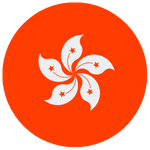On March 14, 2019, the Ministry of Finance and the State Administration of Taxation jointly issued the “Notice on Preferential Individual Income Tax Policies in the GBA Area” (Caishui [2019] No. 31, hereinafter referred to as “Circular 31”). The preferential policy for the subsidy of individual income tax burdens introduced in this article aims to attract ‘high-end’ and ‘urgently-needed talents from overseas (including Hong Kong, Macao, and Taiwan) to work in the Greater Bay Area.
Quicky Briefing of Great Bay Area
The Guangdong-Hong Kong-Macao Greater Bay Area (abbreviated GBA Area or Great Bay Area) consists of two special administrative regions of Hong Kong and Macau and nine Pearl River Delta cities of Guangdong Province (Guangzhou, Shenzhen, Zhuhai, Foshan, Huizhou, Dongguan, Zhongshan, Jiangmen , Zhaoqing) with a total area of 56,000 square kilometers.
At the end of 2018, the total population has reached 70 million. It is one of the most open and economically vigorous regions in China
There are two different political and economic systems, three currencies, and three independent customs zones in the zone, which are not available in any other economic areas in the world. The 11 cities in the GBA Area have a good division of labor: Hong Kong is an international financial center, Shenzhen is a technological innovation center, Guangzhou is a global trade center, and Dongguan and other places are manufacturing centers. This clear division of labor is very beneficial to economic development.
In the year 2020, The World Intellectual Property Organization (WIPO) published the world’s top 50 innovation clusters in its latest annual report, with Tokyo and Yokohama ranked first, and Guangzhou, Shenzhen, and Hong Kong ranked second. The ranking is based on the number of international patent applications.
Patent applications in the GBA Area are biased towards the electronic communications industry, and 47% of international patent applications belong to this industry.
Individual income tax subsidies
To implement the preferential individual tax policy of Circular 31, the Guangdong Provincial Department of Finance and the State Administration of Taxation and Guangdong Provincial Taxation Bureau jointly issued the “Notice on the Implementation of the Greater Bay Area Individual Income Tax Preferential Policy” on June 22, 2019 (Yue Cai Shui [2019] No. 2, hereinafter referred to as the “Notice”), which specifically clarifies the requirements of the tax difference subsidy standard, the scope of individual income, the scope of the talent identification framework and the principle opinions.
Bullet points:
- Specific standards and calculation methods of subsidies
For overseas ‘high-end’ and ‘urgently-needed’ talents located in Guangzhou, Shenzhen, Zhuhai, Foshan, Huizhou, Dongguan, Zhongshan, Jiangmen and Zhaoqing (hereinafter referred to as the ” Nine cities”), their individual income tax (IIT) that exceeds the 15% of the taxable income shall be subsidized by the local governments.
The formula for calculating the subsidy is as follows:
Subsidy amount = IIT paid in the Nine Cities – taxable income * 15%
The subsidy is exempt from IIT and is calculated and declared once a year.
The subsidy includes the following six items of income:
Income from wages and salaries; Income from labor remuneration; Author’s remuneration; Income from royalties; Personal business income; Subsidy income from selected talent projects or talent projects.
- Who can apply the subsidy?
While meeting the following basic conditions, overseas ‘high-end’ and ‘urgently-needed’ talents who meet one of the other conditions can apply for the Greater Bay Area IIT subsidy:
Basic conditions (To be met at the same time)
- Permanent residents of Hong Kong and Macau, Hong Kong residents who have obtained the Hong Kong Entry Program (excellent talents, professionals and entrepreneurs), residents of Taiwan area, persons of foreign nationality, or returned overseas students and overseas Chinese who have obtained long-term residence abroad;
- Work in the Nine Cities and pay taxes in accordance with the law;
- Comply with laws and regulations, scientific research ethics and scientific research integrity.
Other conditions (to be met one of them)
- Candidates from major national, provincial, and municipal talent projects who have obtained the Guangdong “Talent Excellent Guangdong Card”, foreigner work permit (Class A) or foreign high-end talent confirmation letter, and other overseas high-end talents recognized by the state, province, and city-level talent
- Scientific research team members of major national, provincial and municipal innovation platforms, scientific research technical team members of institutions of higher learning, scientific research institutions, hospitals and other related institutions;
- Technological and excellent management talents who are employed and entrepreneurial in key industries and key fields of the province;
- Other urgently-needed talents with special expertise recognized by the Nine Cities.
Subsidies are easy to calculate, and the burden is greatly reduced
In the following table, we have selected the annual salary levels of RMB 720,000, 960,000 ,and 1.2 million respectively, and compared the actual tax rates before and after enjoying the tax subsidy in the Greater Bay Area. At the same time, the same annual salary level is compared with the actual tax rate in Hong Kong.

We will continue to pay close attention to the relevant policies of the Greater Bay Area and make a policy interpretation as soon as possible.
At the same time, if you have any related questions, please feel free to contact us.




















